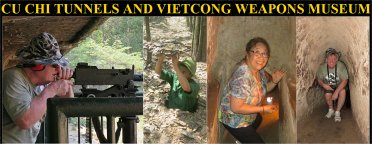The Cu Chi Tunnels are
about 75 km NW of Saigon in a forested/jungle area close to the Saigon
River. The digging of the Cu Chi Tunnels was started by the Viet Minh in
1948 during their fight against the French colonial forces. Originally
each village in the area would dig its own tunnel -- by hand -- and over
time the tunnels were eventually connected. During the "American
War" of the '60s and '70s the tunnels were taken over and expanded by the
Communist North Vietnamese and the Vietcong as part of their offensive
against the South Vietnamese and US in Saigon
As described in the brochures:
"This is a unique architectural structure, a system of deeply underground
tunnels having several floors and alleys and branches like a spider web
more than 250 km long, with places for dining, living, meeting and fighting."
Our local tour guide on the bus
and around the Tunnel complex was Mr. Hai. His family name was Phat and
his middle name was Manh. He had a great sense of humour. He explained
that there was another guide named Hai, so the boss gave him a nickname:
Hai Phat Manh! The other guide was a skinny one. He asked us to make sure
we tell him in good time if we need to go "pissing" -- luckily we all made
it to the W/Cs at the Cu Chi entrance ...LOL!
Mr. Hai was a Vietnam War veteran.
He was a communications soldier with the South Vietnamese and American
forces and was at the Cu Chi district for eight months, as well as eight
years at another location close to Hue. Even before he told us about his
work with the South, we could tell that he was pro-South, while the guide
yesterday was pro-communist. Mr. Hai was about 70 years old, while Mr.
Law from yesterday was in his thirties. Both spoke fairly good English.
They presented us with an amazing string of facts -- obviously after doing
these spiels for so many times it comes automatically, just like singing
a song.
We walked down a long entrance
ramp past security and Mr. Hai paid our admission. The hike along the jungle
trail was quite tourist friendly and we saw numerous displays along the
way. The name Cu Chi is derived from a small bush -- about two meters tall.
It produces small fruits like cherry pits and is poisonous. If eaten, death
occurs in about an hour. These tunnels were dug by the North Vietnamese
guerillas and Viet Cong soldiers and were originally quite small in diameter
since most of the Vietnamese from that time were much smaller than those
of today. Soldiers even had to crawl on their stomachs through many of
the tunnels. At one entrance, we were shown how the soldiers would go down
the hole, then pull the camouflaged lid over the entrance. Some of the
entrances and tunnels have been widened for tourists and we bravely entered
and made our way through the darkness to a far-off exit in a stooped position.
The tunnels now even have panic exits for those who become claustrophobic.
As seen in the accompanying diagram
the tunnels were on many levels with hollowed-out caverns. Soldiers, and
even entire families, lived in this darkness for years. Newborn babies
were quickly taken away to the more remote northern areas, as they posed
a security risk. Offensives were planned in war "rooms," there were hospital
areas, storage cavities, sleeping dorms, and bomb making rooms -- where
unexploded American ordnance was carefully opened and the explosives recycled
into land mines and smaller explosives. Clay excavated from the tunnels
was dumped in existing bomb craters to avoid detection. Cooking was done
mainly in the early morning hours when smoke would blend in with the jungle
mist and fog. Observation, ventilation and smoke outlets were hidden in
rock and ant mounds. Smoke was piped via hollowed bamboo some distance
from the actual tunnels. Air, food and water were scarce and the tunnels
were infested with ants, poisonous centipedes, scorpions, spiders and vermin.
Fresh water was drawn from wells dug from the lower level tunnels.




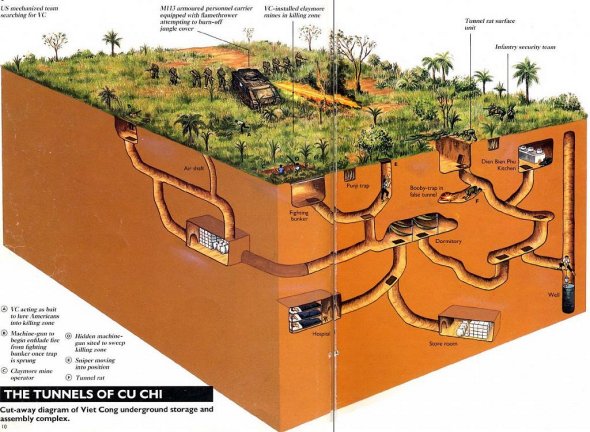
![]()
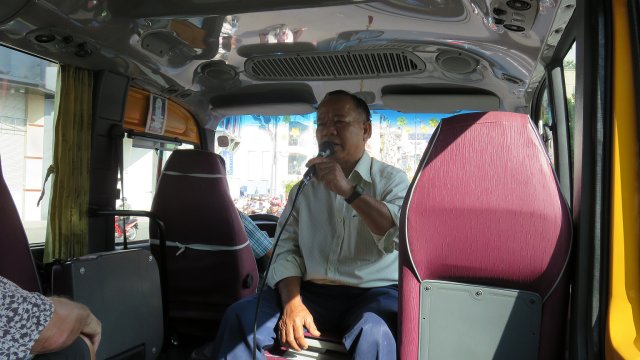
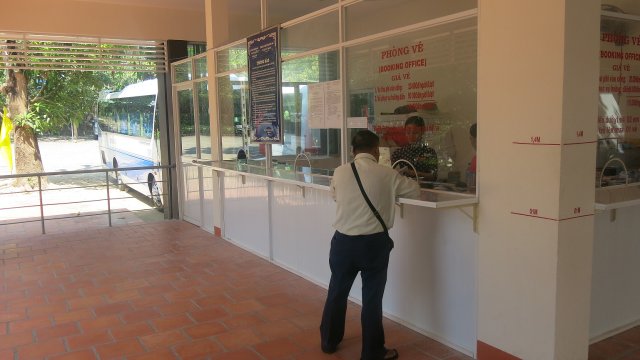
![]()
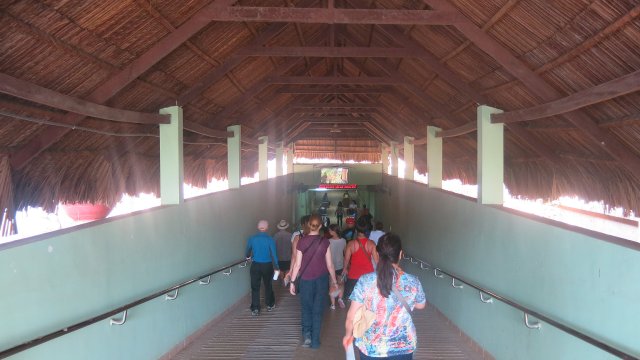
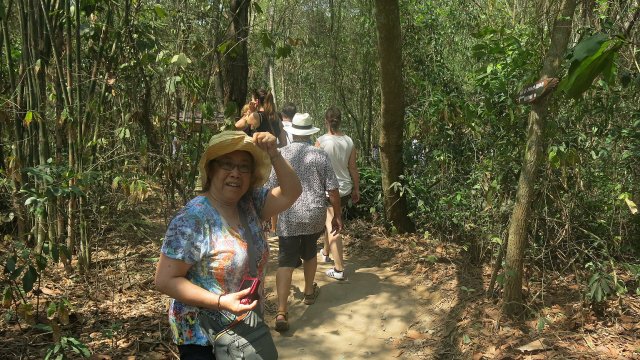
![]()
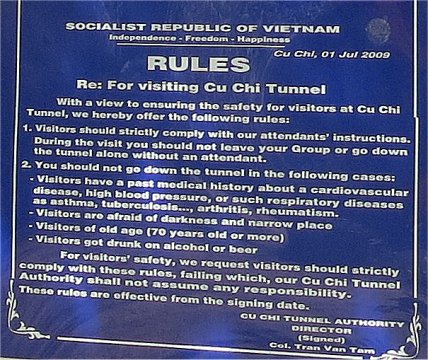 .
.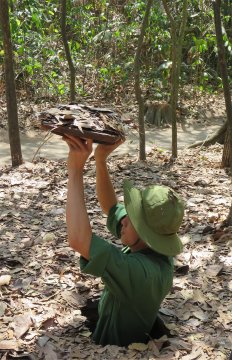
![]()
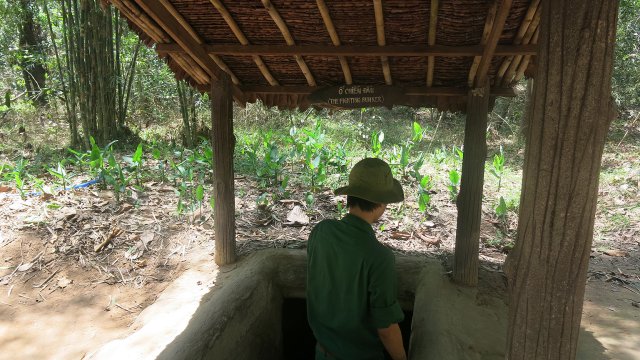
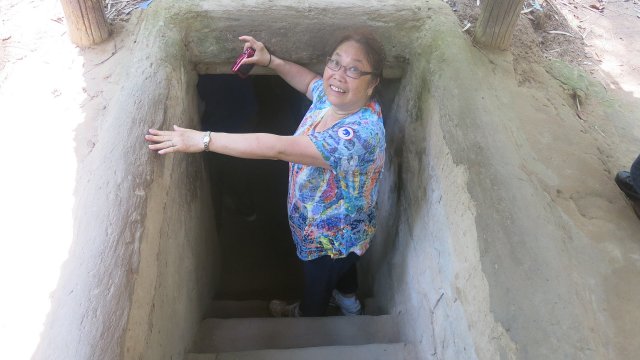
![]()
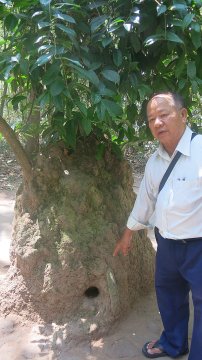
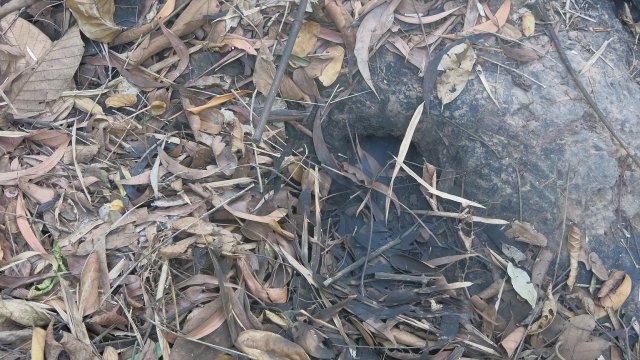
![]()
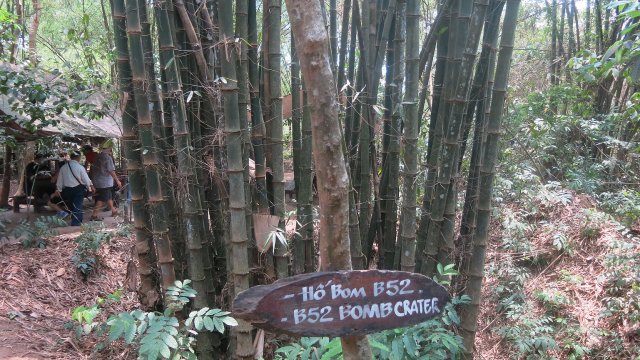
![]()
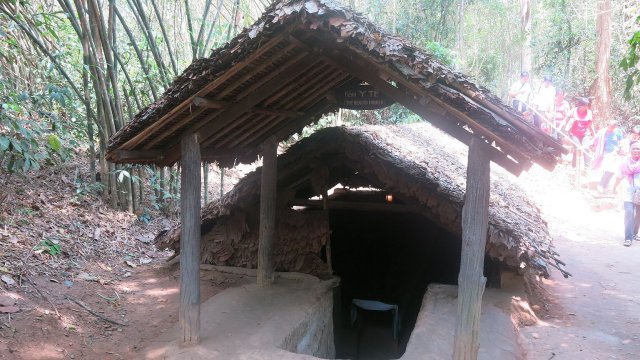
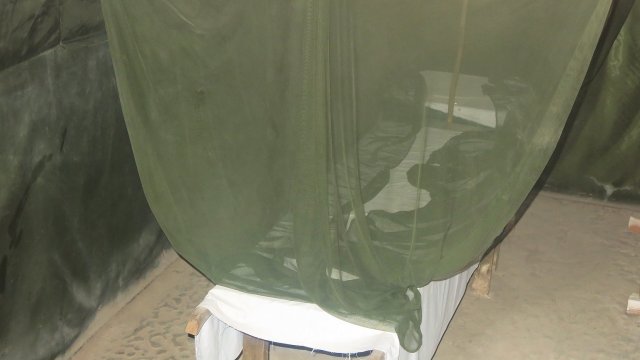
![]()
![]()
